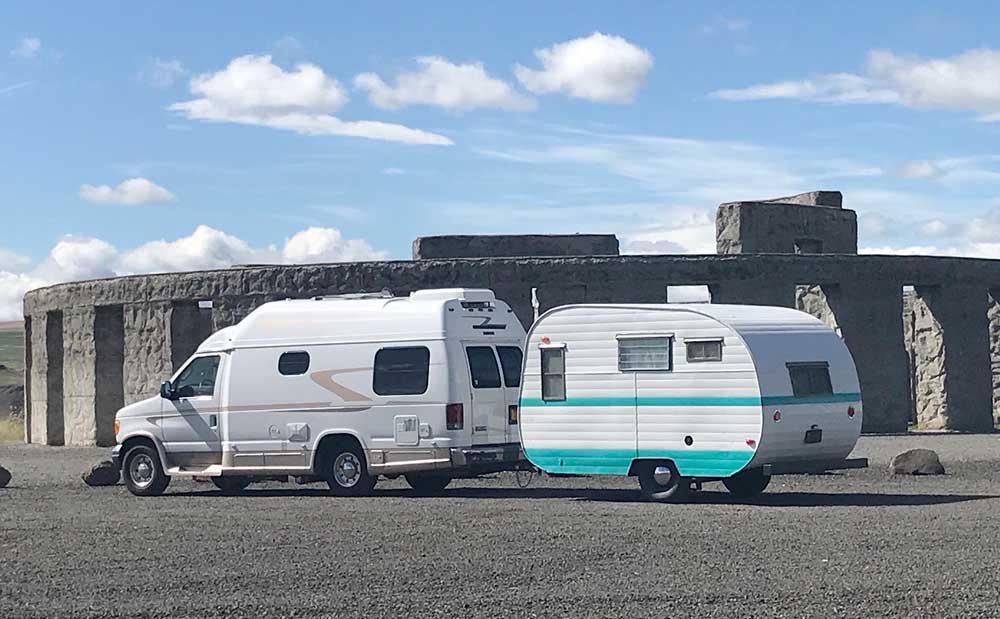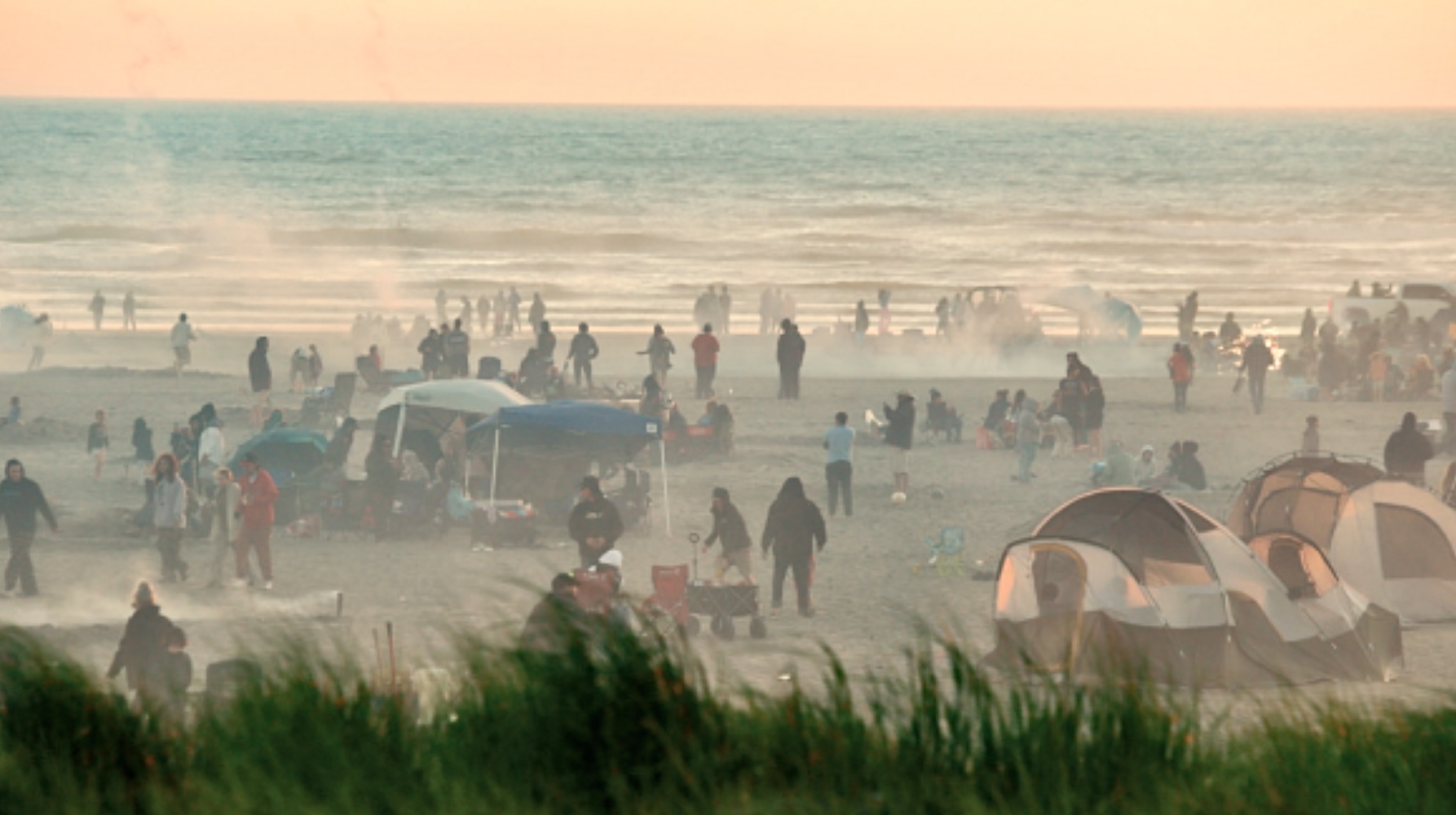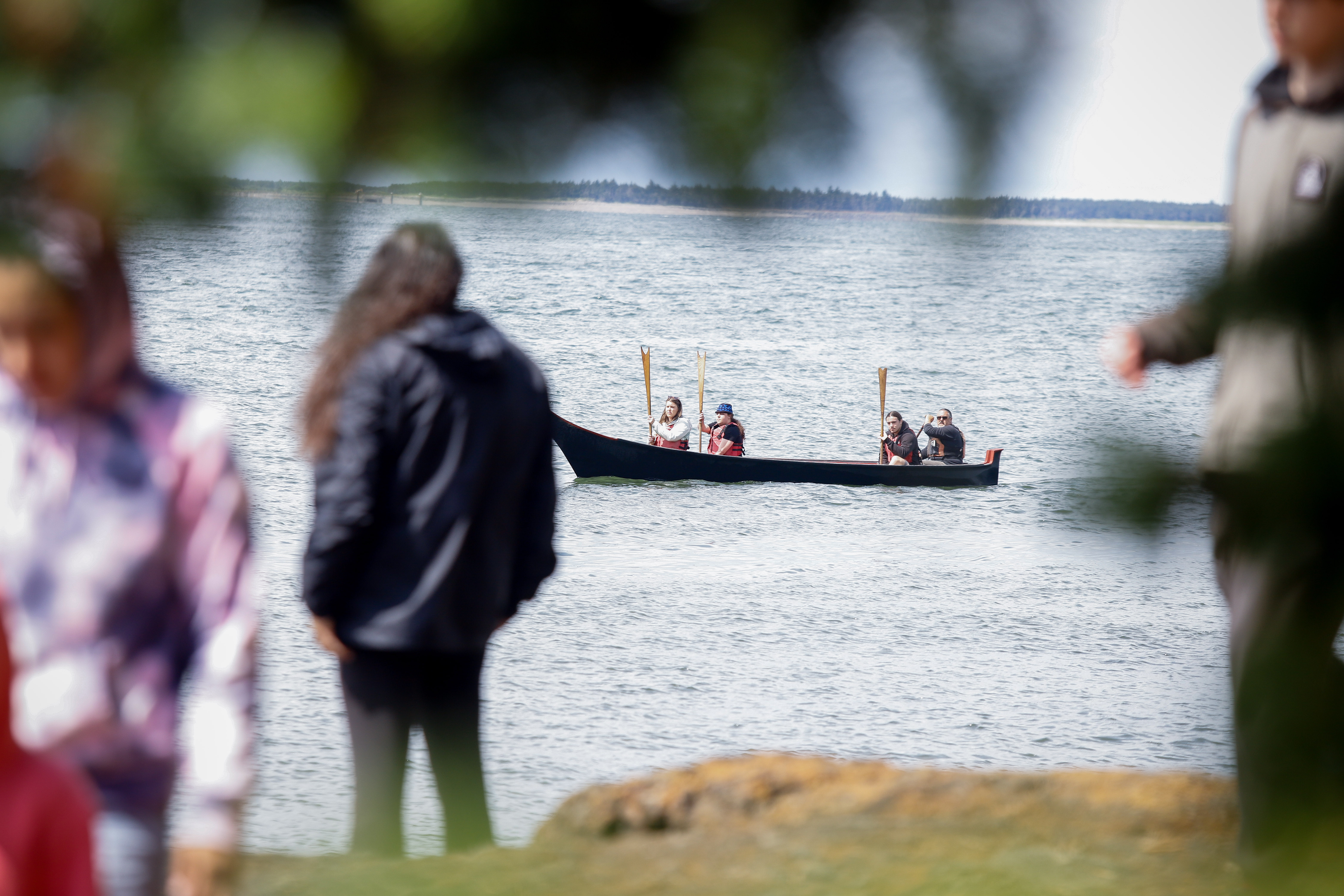Coast Chronicles: Summer is road-trippin’ time
Published 12:15 am Wednesday, June 19, 2019

- A friend’s 20-foot Pleasure Way pulls the author’s vintage 1957 14-foot Westerner on a six-state road trip, here pausing at the Maryhill Stonehenge.
My early days of summer have been full of amazing road trips — both on water and highways. First there was the mind-bending cruise up the Inside Passage where I discovered the beauties of British Columbia and Alaska, which shocked me into an opportunity I missed. My Great Aunt Bea, sister to my mother’s mom, lived her life in Juneau and had property on Kodiak Island. Did I ever have the notion to visit her? No! What was I thinking? She is long since dead but why-oh-why was I never curious enough to head north in her lifetime to see what it was all about?
Kismet
Moreover, Aunt Bea’s last name sounds vaguely indigenous. Could she have been married to a First Nations person? Indigenous, First Nation, Native American, Indian peoples (or whatever our neighbors prefer to be called) and their culture has been, rather unintentionally, the central theme of my travels so far this summer.
To wit: if you followed my Linblad cruise notes of a couple weeks ago, you’ll know I touched down in Alert Bay, British Columbia, Canada, at the “Big House” for a heart-felt sharing of dance and food lovingly delivered to us by the Kwak’waka’wak people.
Then in Haida Gwaii, we met Haida carvers, dancers, and watchmen, reinvigorating and enhancing their culture. And on this most recent road trip (details follow), I had the chance to glimpse petroglyphs in Valley of Fire State Park, Nevada (parks.nv.gov/parks/valley-of-fire); Fremont Indian State Park and Museum, Utah (stateparks.utah.gov/parks/fremont); and Tamastslikt Cultural Institute outside of Pendleton, Oregon (tamastslikt.org). And, along with the Maryhill Museum of Art (maryhillmuseum.org), all four places hold stunningly beautiful specimens of native culture and arts.
Native peoples
Post white contact, the narrative of the native peoples on our continent, each different, are all the same: they were stolen from, tortured, lied to and beaten down at every turn. And/but some are making a slow steady comeback and reviving their cultural legacies, arts, skills and stories.
I guess all of us are touched by native themes whether we want to acknowledge it or not. Here’s my case. We’re living in Chinook Nation country, full of tribal peoples who kept Lewis and Clark alive over the winter. And let’s add that “Chinookan” is well-documented as the trading language that developed our region. The Chinooks are inextricably woven into the history of our country; and although their deeds are duly noted in the Lewis and Clark journals, they’ve still not been recognized by the leaders of our nation as a tribe. How can this still be the case?
I have a double dose of mostly unacknowledged influence as I grew up in the Yakima Valley, home to the Yakama Nation, now living on one of the largest reservations in the USA (though, as was the case for native peoples all over the country, their territories were shaved away and shaved away to nearly nothing). As I’ve said before, I learned not one thing about this ingenious, trading people as a kid.
Plus, as Pacific Northwesterners, we’re all in the sway of the Mighty Columbia where Celilo Falls was summarily buried in slack water without so much as a thought about either the many tribal peoples who thrived and traded along its banks, or to the salmon fisheries our region has benefitted from.
What is wrong with this picture? Just as we are able now, after nearly 50 years, to look back with clearer insight on the Vietnam era, perhaps we can bring a different set of values to the “Indian” story. My summer travels to date have certainly brought me to a sharpened “woke” place.
Road tripping
Last month a friend volunteered to drive her rig, with us in it, and pick up a vintage trailer — a classic 14-foot, 1957 Westerner — I’d purchased on my trip back from the Southwest last year. As I didn’t know if my 2004 Volvo wagon would be up to the task, I was thrilled.
We set off with a general idea about places to stop along the way down, each about a six or seven hours drive apart; and then we followed our noses during the day, side-tripping here and there as a road or sign or whim caught our attention. We had a goal in mind — Blythe, California — but no hard and fast schedule. This seemed to me the perfect way to conduct a road trip.
As amazing as the Linblad cruise was — our road trip was equally exciting for different reasons. My conclusion? We live in the biggest-hearted and most beautiful country on earth. Oh, the places we saw and the people we met!
In the Pahranagat National Wildlife Refuge, a stunning oasis in the middle of the Mohave Desert in Nevada — fws.gov/refuge/Pahranagat — we camped directly beside the lake for $0 and watched the sun set on reeds and lingering water birds. (The mosquitos made mincemeat of us: bring bug repellent; and no reservations — it’s first-come first-served — so arrive early.)
Note that there are 556 wildlife refuges in the U.S. (listed here: tinyurl.com/yxg4era2)!
Our state itself has 22 refuges. They are, for the most part, less-known, less-crowded and less-expensive places to visit or camp than most other either state or national parks, and just as beautiful.
Hidden beaches
One of my favorite stops was the Hidden Beaches Resort in Blythe, where we stayed for two nights beside the Colorado River (hiddenbeachesresort.com). For one whole day we did no driving at all. We read, sat on the dock with our feet in the water, and watched river boats and water scooters (sometimes called Sea-Doos) ply the currents until sunset. There was even a small café with some of the best fish tacos and shrimp ceviche I’ve had anywhere.
Then we hitched up my trailer and headed back to home-sweet-home Washington, but not before a meandering wander through California, Arizona, Nevada, Utah and Idaho. We skirted south along the Great Salt Lake and walked in the waters near the Bonneville Speedway; we drove through Clear Creek Canyon on a tip from Elder Robb, who gave us a tour of Cove Fort built in 1847 (covefort.com) where the telegraph still works (thought of you, Dick Lemke). We even camped at Peach Beach RV on the Washington side of the Columbia and took in Sam Hill’s Stonehenge Monument (more on him soon). And, really, Maryhill Museum is a treasure.
In one final gesture of a true road trip, we sat — totally stopped in our tracks — for two solid hours on Interstate Highway 84 just east of Multnomah Falls as two separate accidents involving three semis and a motorcycle (yikes!) were cleared from the roadway. Even here, people were jovial: some got out to skateboard, or take a walk, or passed information back about what was going on ahead of us. Everyone was friendly, well-mannered and patient.
After all, it’s summer — time to get out, see the world, and meet some Americans!






